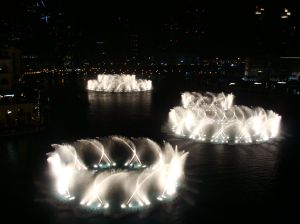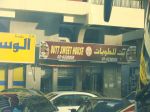One of the wonderful things about traveling the world, let alone the Middle East, was the chance to score a romantic dinner or two.
My wife and I splurged on a rooftop evening at a five-star place overlooking the lit vale of the Petra ruins in Jordan. We enjoyed several fabulous traditional Moroccan meals at riads in Fes, Rabat, Marrakech and Cascades d’Ouzoud. We dined on the waterfront in Ulu Deniz, Turkey, and in and around the Golden Horn in Istanbul. We ate well in Oman too, with the highlight a traditional shuwwa barbeque served to us in the majlis hall of a friend’s family in Sur.
But, sad to say, every now and again eating good greasy American comfort food held a tremendous ‘traditional’ appeal for us. We frequented a couple of good Mexican restaraunts in Muscat, along with a burger joint called the Roadside Diner which combined uncomfortably frigid air-conditioning with a new-fangled notion of 50’s decor and techno-thumping music. The scarcity of good burgers made the Roadside’s other oddities tolerable.
But, of all these places, only one managed to combine a small amount of romance with American, ummm, cuisine. So, here’s to the winner of my Not Quite Right award for favorite restaraunt in the Middle East: T.G.I. Fridays in Dubai.
The secret, for this restaraunt, was its truly wonderful balcony seating . . .
. . . combined with the ‘larger-than-Las Vegas’ light, water and music show . . .
. . . and the phenomenal view of the Burj Khalifa (world’s tallest building) right above the balcony. The lights on the Burj Khalifa were even timed so that they participated in and enhanced the riffing cascades of the fountain!

The tallest building in the world, as seen while waiting for my Loaded Potato Skins. The blurry snowflake-ish things are reflections from sand and grit in the air. Blech!
And, let us not forget, good soda, fries, non-alcoholic cocktails, and any of TGI Fridays’ many other schmutzy treats!
To get there, go to the Burj Khalifa Mall, near the indoor ice-skating rink. Water/light shows begin every 20 minutes or so, insha’allah.












